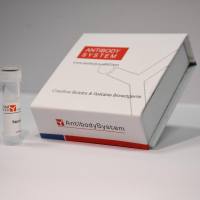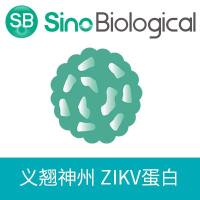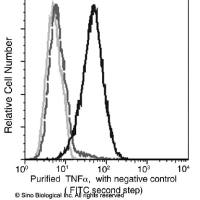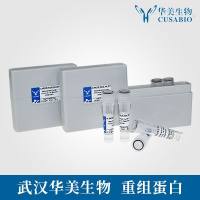Tandem Affinity Purification of Protein Complexes in Mouse Embryonic Stem Cells Using In Vivo Biotinylation
互联网
- Abstract
- Table of Contents
- Materials
- Figures
- Literature Cited
Abstract
Streptavidin affinity purification of protein complexes, in combination with in vivo biotinylation of critical transcription factors, has contributed to the analysis of the pluripotent state in mouse embryonic stem (ES) cells and made it possible to construct a protein?protein interaction network.This has facilitated discovery of novel pluripotency factors and a better understanding of stem cell pluripotency. Here we describe detailed procedures for an in vivo biotinylation system setup in mouse ES cells, and affinity purification of multi?protein complexes using in vivo biotinylation. In addition, we present a protocol employing SDS?PAGE fractionation to reduce sample complexity prior to submission for mass spectrometry (MS) protein identification. Curr. Protoc. Stem Cell Biol. 11:1B.5.1?1B.5.17. © 2009 by John Wiley & Sons, Inc.
Keywords: tandem affinity purification; in vivo biotinylation; protein?protein interaction; embryonic stem cells
Table of Contents
- Introduction
- Basic Protocol 1: Establishment of ES Cell Lines Expressing BirA and Sub‐Endogenous Biotinylated Proteins
- Basic Protocol 2: Tandem Affinity Purification of Protein Complexes
- Support Protocol 1: SDS‐Page Fractionation of Protein Complexes
- Reagents and Solutions
- Commentary
- Literature Cited
- Figures
- Tables
Materials
Basic Protocol 1: Establishment of ES Cell Lines Expressing BirA and Sub‐Endogenous Biotinylated Proteins
Materials
Basic Protocol 2: Tandem Affinity Purification of Protein Complexes
Materials
Support Protocol 1: SDS‐Page Fractionation of Protein Complexes
Materials
|
Figures
-

Figure 1.B0.1 Establishment of a biotinylation system in J1 ESCs. A stable ESC line expressing the bacterial BirA enzyme was first established by transfection with a BirA‐expressing plasmid bearing the neomycin resistance ( neo r ) gene and G418 selection. A second plasmid containing cDNA encoding a transcription factor (TF) of interest with an N‐terminal Flag‐biotin dual tag (FLBIO) and a puromycin resistance ( puro r ) gene was introduced, and cells were selected with puromycin. The resulting stable line is resistant to both G418 and puromycin, and expresses FLAG‐tagged, biotinylated TF (FLBIO TF) that can be immunoprecipitated by anti‐FLAG and streptavidin antibodies/beads. View Image -

Figure 1.B0.2 A summary of the procedure for tandem affinity purification of multiprotein complexes in mouse ESCs. Following establishment of BirA‐only and BirA+FLBIO TF‐expressing ES cell lines, immunoprecipitation is performed using anti‐FLAG M2 agarose (FLAG‐IP). The bound material is eluted with FLAG peptide and further purified by streptavidin affinity capture. The purified protein complexes are fractionated on SDS‐PAGE, and subjected to LC‐MS/MS to identify components of the protein complexes. View Image -

Figure 1.B0.3 Examples of western blot analyses. (A ) A western blot with anti‐V5‐HRP to detect BirAV5 expression. (B ) A western blot using native antibody against the TF of interest to detect both endogenous and biotinylated TF proteins. The sub‐endogenous level of the biotinylated transcription factor (FLBIO TF) and the expression level of the endogenous protein (end TF) are indicated. NS denotes nonspecific signals. Panel B is reprinted from Kim et al. () with permission of Nature Protocols View Image
Videos
Literature Cited
| Literature Cited | |
| Beckett, D., Kovaleva, E., and Schatz, P.J. 1999. A minimal peptide substrate in biotin holoenzyme synthetase‐catalyzed biotinylation. Protein Sci. 8:921‐929. | |
| Chubet, R.G. and Brizzard, B.L. 1996. Vectors for expression and secretion of FLAG epitope‐tagged proteins in mammalian cells. Biotechniques 20:136‐141. | |
| Conner, D.A. 2000. Mouse embryo fibroblast (MEF) feeder cell preparation. Curr. Protoc. Molec. Biol. 51:23.2.1‐23.2.7. | |
| Cronan, J.E., Jr. 1990. Biotination of proteins in vivo. A post‐translational modification to label, purify, and study proteins. J. Biol. Chem. 265:10327‐10333. | |
| de Boer, E., Rodriguez, P., Bonte, E., Krijgsveld, J., Katsantoni, E., Heck, A., Grosveld, F., and Strouboulis, J. 2003. Efficient biotinylation and single‐step purification of tagged transcription factors in mammalian cells and transgenic mice. Proc. Natl. Acad. Sci. U.S.A. 100:7480‐7485. | |
| Gallagher, S. 2006. One‐dimensional SDS gel electrophoresis of proteins. Curr. Protoc. Molec. Biol. 75:10.2A.1‐10.2A.38. | |
| Kim, J., Cantor, A.B., Orkin, S.H., and Wang, J. 2009. Use of in vivo biotinylation to study protein‐protein and protein‐DNA interactions in mouse embryonic stem cells. Nat. Protoc. 4:506‐517. | |
| Kim, J., Chu, J., Shen, X., Wang, J., and Orkin, S.H. 2008. An extended transcriptional network for pluripotency of embryonic stem cells. Cell 132:1049‐1061. | |
| Phelan, M.C. 2006. Techniques for mammalian cell tissue culture. Curr. Protoc. Mol. Biol. 74:A.3F.1‐A.3F.18. | |
| Siu, F.K.Y., Lee, L.T.O., and Chow, B.K.C. 2008. Southwestern blotting in investigating transcriptional regulation. Nat. Protoc. 3:51‐58. | |
| Strober, W. 1997. Trypan blue exclusion test of cell viability. Curr. Protoc. Immunol. 21:A.3B.1‐A.3B.2. | |
| Wang, J., Rao, S., Chu, J., Shen, X., Levasseur, D.N., Theunissen, T.W., and Orkin, S.H. 2006. A protein interaction network for pluripotency of embryonic stem cells. Nature 444:364‐368. |









